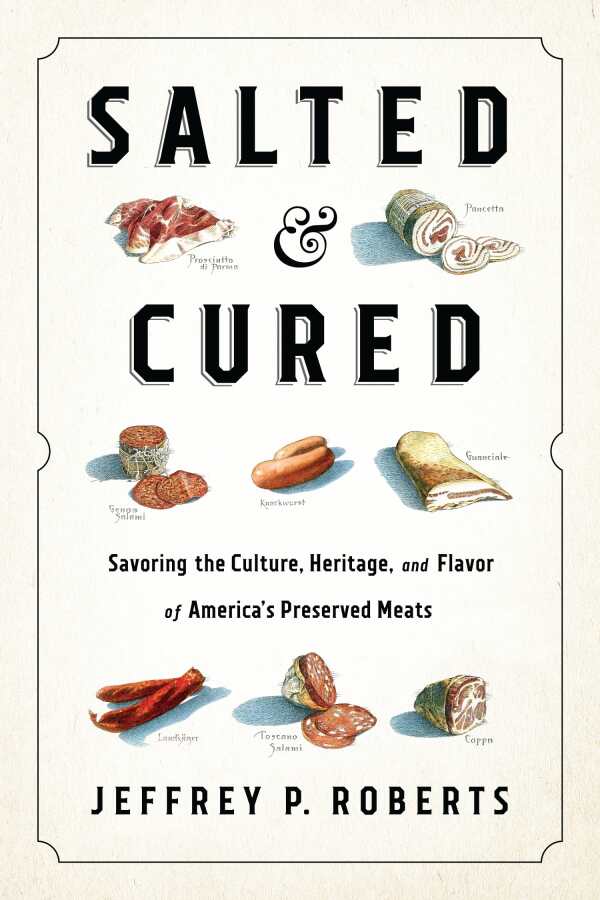
Salted and Cured
Savoring the Culture, Heritage, and Flavor of America's Preserved Meats
The wave of interest in artisanal and fermented foods has made locally crafted cheeses, beers, and pickles a hot commodity at restaurants and farmers markets. Now preserved meats are bleeping bright on food lovers’ radar—those salted, cured, and smoked meats traditional in most cultures, but which had fallen out of favor with health-conscious Americans in recent decades. Jeffrey P. Roberts, a Slow Food activist and food historian, debunks these fears about cholesterol and nitrates, and surveys the renaissance in locally produced salumi and charcuterie throughout the United States.
Part history, part travelogue, Salted and Cured documents how farmers, butchers, and chefs nurture each other in the production of high-quality, sustainably sourced preserved meats in a variety of cultural and regional traditions. The author used his myriad connections to research a porkophile’s dream journey, investigating the making of country hams in Virginia, the boudin and andouille sausage of New Orleans, the wurst of German and Slavic butcher shops of New York City, and the glories of the Midwestern meat-packing capitals.
As more restaurant patrons and home cooks turn up their noses at the foodstuffs of industrialized agriculture, demand for meat that has been locally and humanely raised has increased. These products take time to age and cure properly and are most often sourced from small farms with slower-growing heritage breeds: a recipe for how production is currently far outstripped by public demand. Add in the rediscovery of what food writer Anthony Bourdain dubs “the nasty bits” (offal and other snout-to-tail parts of the piggy carcass), utilized lovingly and most fully in sausages and salamis, and you can see why these preserved meats are so popular today.
An extensive bibliography, endnotes, photographs, and a list of producers offer opportunities to further explore unfamiliar types of meat products. The glossary at the back also helps reinforce the differences between salami and salumi, lardo and lomo, and all the spectacular meat treats in between.
Reviewed by
Rachel Jagareski
Disclosure: This article is not an endorsement, but a review. The publisher of this book provided free copies of the book to have their book reviewed by a professional reviewer. No fee was paid by the publisher for this review. Foreword Reviews only recommends books that we love. Foreword Magazine, Inc. is disclosing this in accordance with the Federal Trade Commission’s 16 CFR, Part 255.
